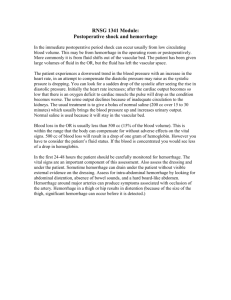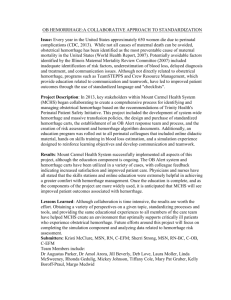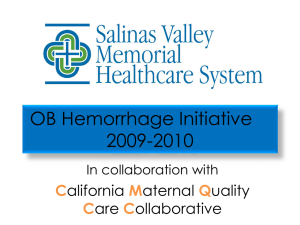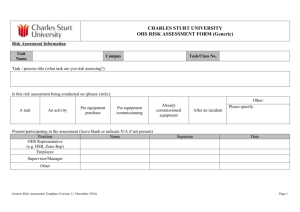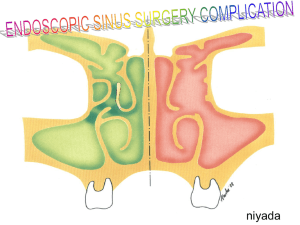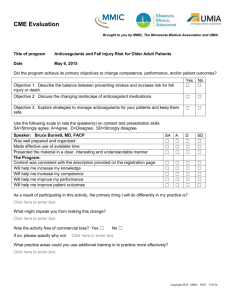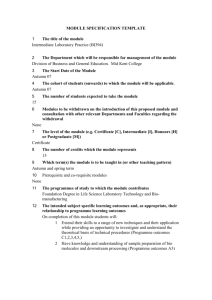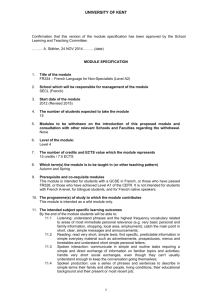Rationale for Study Drug Selection Levetiracetam Levetiracetam is a
advertisement
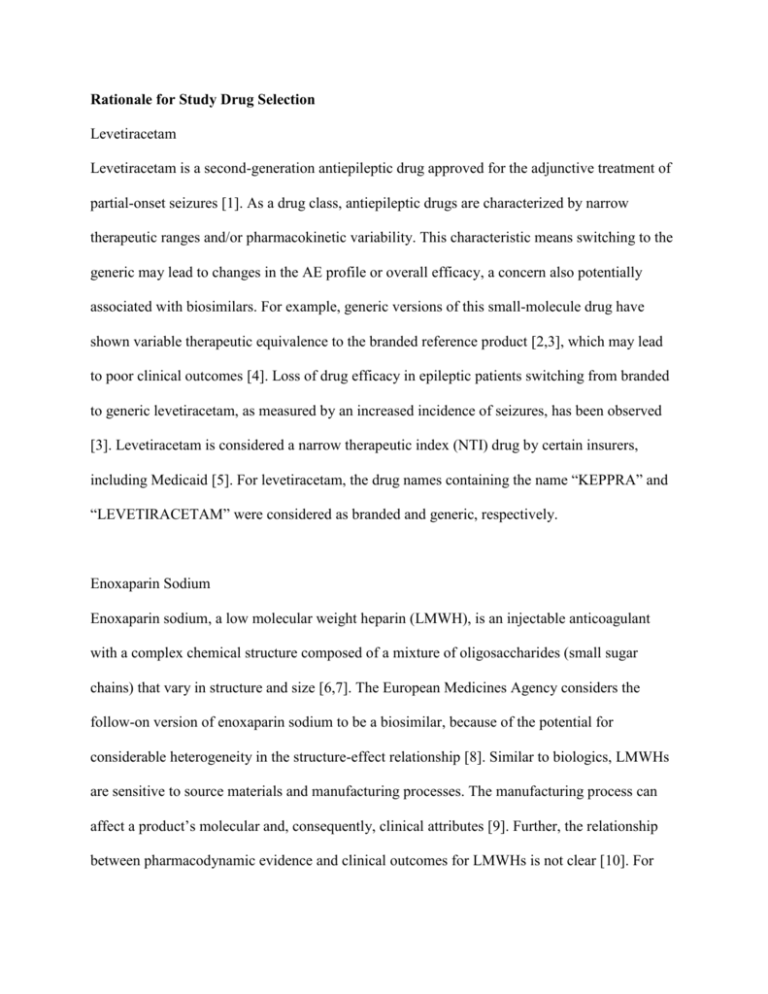
Rationale for Study Drug Selection Levetiracetam Levetiracetam is a second-generation antiepileptic drug approved for the adjunctive treatment of partial-onset seizures [1]. As a drug class, antiepileptic drugs are characterized by narrow therapeutic ranges and/or pharmacokinetic variability. This characteristic means switching to the generic may lead to changes in the AE profile or overall efficacy, a concern also potentially associated with biosimilars. For example, generic versions of this small-molecule drug have shown variable therapeutic equivalence to the branded reference product [2,3], which may lead to poor clinical outcomes [4]. Loss of drug efficacy in epileptic patients switching from branded to generic levetiracetam, as measured by an increased incidence of seizures, has been observed [3]. Levetiracetam is considered a narrow therapeutic index (NTI) drug by certain insurers, including Medicaid [5]. For levetiracetam, the drug names containing the name “KEPPRA” and “LEVETIRACETAM” were considered as branded and generic, respectively. Enoxaparin Sodium Enoxaparin sodium, a low molecular weight heparin (LMWH), is an injectable anticoagulant with a complex chemical structure composed of a mixture of oligosaccharides (small sugar chains) that vary in structure and size [6,7]. The European Medicines Agency considers the follow-on version of enoxaparin sodium to be a biosimilar, because of the potential for considerable heterogeneity in the structure-effect relationship [8]. Similar to biologics, LMWHs are sensitive to source materials and manufacturing processes. The manufacturing process can affect a product’s molecular and, consequently, clinical attributes [9]. Further, the relationship between pharmacodynamic evidence and clinical outcomes for LMWHs is not clear [10]. For enoxaparin sodium, the drug names containing the name “LOVENOX” and “ENOXAPARIN SODIUM” were considered as branded and generic, respectively. Data Descriptions The FAERS database contains AEs and medication errors reported voluntarily by health care professionals, patients, and other individuals, as well as mandatorily reported from product manufacturers. FAERS data were used to estimate monthly reported AEs attributed to the branded or generic products of interest. Minimum data elements for a FAERS submission are an identifiable patient, an identifiable reporter, a reaction or event, and a suspect drug [11]. Information about the suspect drug would preferably include, at minimum, both the proprietary name (when a product uses a proprietary name) and the nonproprietary name; however, FAERS reports are accepted for processing if only one of these identifiers (brand or nonproprietary name) is reported. Additional Methodologic Detail Continuous possession was determined based on the number of days of supply of the branded or generic drug, allowing for up to a 30-day gap, and ended with discontinuation of the branded or generic drug or a switch from one drug type (branded or generic) to the other. If a patient was in simultaneous possession of both the branded and generic drug, then it was assumed that the patient finished the days of supply of the earliest filled product before switching to the other product. AE claims filed while a patient was in continuous possession of the branded drug or generic drug were attributed to the branded drug or generic drug, respectively. AEs filed during periods of non-continuous possession were excluded. To capture MarketScan claims AEs in the way in which those AEs would have been reported to FAERS, only 1 AE per patient per AE category was counted for the time period when a patient had evidence of receiving only the branded or generic drug. If a patient switched from the brand to generic (or vice versa) and experienced an AE in the same category as an AE experienced while on the previous product, however, that new AE was counted. Patient-level counts of branded- or generic-attributed AEs were then summed to calculate total monthly branded- or generic-attributed MarketScan AE counts. Patient-level counts of drug prescriptions filled were also summed by month to calculate total monthly branded or generic MarketScan prescription counts. Because the study aimed to investigate AE trends over time, it was necessary to identify the month and year associated with AEs. The approximate AE date for each report was identified via the event date variable; for reports with no event date available, the earliest date associated with the AE report (eg, date of submission of AE report) was used in an attempt to most accurately reflect when the event likely took place [12]. Table S1. List of generic products, manufacturers, market entry dates, therapeutic equivalence ratings, and application numbers First Therapeutic Generic Market Equivalence ANDA Entry Date Manufacturer Entry Ratingb Number Datea 11/4/2008 Mylan Pharmaceuticals Inc 11/4/2008 AB 76919 Generic levetiracetam Actavis Mid Atlantic LLC 1/15/2009 AA 78976 Aurobindo Pharma Ltd 1/15/2009 AB 78993 Aurobindo Pharma USA Inc 1/15/2009 AA 79063 Dr Reddys Laboratories Ltd 1/15/2009 AB 78904 Dr Reddys Laboratories Ltd 1/15/2009 AB 76920 Invagen Pharmaceuticals Inc 1/15/2009 AB 78234 Lupin Ltd 1/15/2009 AB 90025 Lupin Ltd 1/15/2009 AB 78154 Orchid Healthcare 1/15/2009 AB 78526 Roxane Laboratories Inc 1/15/2009 AA 78582 Roxane Laboratories Inc 1/15/2009 AB 78042 Sandoz Inc 1/15/2009 AB 77324 Teva Pharmaceuticals USA 1/15/2009 AB 78101 Tolmar Inc 1/15/2009 AA 79107 Torrent Pharmaceuticals Ltd 1/15/2009 AB 78858 Watson Laboratories Inc 1/15/2009 AB 78797 Wockhardt Ltd 1/15/2009 AB 79042 Breckenridge Pharmaceutical Inc 1/16/2009 AA 79120 Mylan Pharmaceuticals Inc 2/10/2009 Not available 78731 Prinston Pharmaceutical Inc 2/10/2009 AB 78106 Taro Pharmaceutical Industries Ltd 2/10/2009 AA 78774 Watson Laboratories Inc Florida 3/2/2009 Not available 77408 Apotex Inc 3/13/2009 AB 78869 Boca Pharmacal LLC 3/20/2009 AB 77319 Silarx Pharmaceuticals Inc 4/3/2009 AA 90263 Zydus Pharmaceuticals USA Inc 4/29/2009 AB 78918 Amneal Pharmaceuticals 10/27/2009 AA 90992 Mylan Pharmaceuticals Inc 12/8/2009 AB 90261 Taro Pharmaceutical Industries Ltd 2/1/2010 AB 78960 Wockhardt EU Operations (Swiss) AG 3/3/2010 AA 90028 Fresenius Kabi USA LLC 5/26/2010 AP 90813 Sun Pharmaceutical Industries Ltd 6/16/2010 AP 90754 Methapharm Inc 7/28/2010 AB 90767 Orchid Healthcare 8/5/2010 AB 90484 Tris Pharma Inc 9/30/2010 AA 90461 Hetero Labs Ltd Unit III 10/8/2010 AB 90515 Lotus Pharmaceutical Co Ltd 11/5/2010 AB 90906 7/23/2010 Sandoz Inc 7/23/2010 AP 77857 Generic enoxaparin Amphastar Pharmaceutical Inc 9/19/2011 AP 76684 sodium Sandoz Inc 11/28/2011 AB 78660 a Date of final regulatory approval was used as a proxy for market entry date. b AA = therapeutically equivalent products in conventional dosage forms not presenting bioequivalence problems; AB = therapeutically equivalent products meeting necessary bioequivalence requirements; AP = therapeutically equivalent injectable aqueous solutions. Table S2. Adverse event categories and corresponding MedDRA terms and ICD-9-CM codes for levetiracetam AE Category MedDRA Term(s) ICD-9 Code(s) Abnormal liver function Liver function test abnormal 794.8 test Amnesia, memory impairment, transient global 437.7, 780.93 Amnesia amnesia Anxiety Anxiety 300.0X Convulsion/seizure 780.31, 780.32, 780.39 Convulsion, febrile convulsion, partial seizures, petit mal epilepsy, simple partial seizures, status epilepticus Depression and suicidal behavior Diplopia Erythematous conditions Completed suicide, depression, depression suicidal, major depression, suicidal behaviour, suicidal ideation, suicide attempt Diplopia Erythema multiforme, Stevens-Johnson syndrome, toxic epidermal necrolysis Gastroenteritis Hallucination Hepatic failure, autoimmune hepatitis, cytolytic hepatitis, hepatitis, hepatitis acute 296.2X, 296.3X, 296.82, 311, E95.XX, V62.84 368.2 695.10, 695.11, 695.12, 695.13, 695.14, 695.15, 695.19 558.2, 558.9 292.12, 293.82, 780.1 570, 571.42, 573.3 Gastroenteritis Hallucination Hepatic failure and hepatitis Leukopenia and 288.00, 288.03, 288.09, 288.50, Granulocytopenia, leukopenia, neutropenia neutropenia 288.59 Movement disorders Ataxia, dyskinesia, tardive dyskinesia 333.82, 333.85, 334.3, 781.3 Pancreatitis Pancreatitis, pancreatitis acute 577.0 Pancytopenia Pancytopenia 284.12, 284.19 Pregnancy-related Abortion spontaneous, premature labor 634.XX, 644.2X Thrombocytopenia Thrombocytopenia 287.30, 287.39, 287.49, 287.5 AE, adverse event; ICD-9-CM, International Classification of Diseases, Ninth Revision; MedDRA, Medical Dictionary for Regulatory Activities. Table S3. Adverse event categories and corresponding MedDRA terms and ICD-9-CM codes for enoxaparin sodium AE Category MedDRA Term(s) ICD-9 Code(s) Anaphylactic/anaphylactoid Anaphylactic reaction 995.0 reactions Anaemia, hemorrhagic anaemia, iron deficiency 280.0, 280.1, 280.9, 281.9, Anemia anaemia 285.1, 285.9 Atrial fibrillation Atrial fibrillation 427.31 Cellulitis Cellulitis 681.00, 681.10, 682.X Cerebrovascular accident Cerebrovascular accident 434.01, 434.91, 977.02 Convulsion Convulsion 780.31, 780.32, 780.39 Edema Edema, edema peripheral 782.3 Eosinophilia Eosinophilia 288.3 Hematemesis Hematemesis 578.0 Cardiac failure, cardiac failure congestive, 428.0, 428.1, 428.20, 428.21, cardiogenic shock, cardiopulmonary failure 428.23, 428.30, 428.31, 428.33, Heart failure 428.40, 428.41, 428.43, 428.9, 785.51, 799.1 Abdominal wall hemorrhage, arterial 360.43, 376.32, 379.23, 430, hemorrhage, cerebellar hemorrhage, cerebral 431, 432.0, 432.1, 432.9, 459.0, hemorrhage, diverticulum intestinal hemorrhagic, 530.82, 532.00, 532.01, 562.02, duodenal ulcer hemorrhage, eye hemorrhage, 562.03, 562.12, 562.13, 569.3, gastric hemorrhage, gastrointestinal hemorrhage, 578.9, 719.1X, 729.92, 998.12 hemarthrosis, hemorrhage intracranial, intraabdominal hemorrhage, lower gastrointestinal hemorrhage, oesophageal hemorrhage, Hemorrhage and hematoma pericardial hemorrhage, peritoneal hemorrhage, rectal hemorrhage, retroperitoneal hemorrhage, skin hemorrhage, subarachnoid hemorrhage, thalamus hemorrhage, thoracic hemorrhage, upper gastrointestinal hemorrhage, vitreous hemorrhage, abdominal wall hematoma, extradural hematoma, post procedural hematoma, spinal hematoma, subdural hematoma, vessel puncture site hematoma Hematuria Hematuria 599.7X Hyperkalemia Hyperkalemia 276.7 Hyperlipidemia Hyperlipidemia 272.0, 272.1, 272.2, 272.3, 272.4 458.0, 458.29, 459.8, 458.9, Hypotension Hypotension 796.3 Lung edema Pulmonary edema, acute pulmonary edema 518.4 Osteoporosis Osteoporosis 733.00, 733.02, 733.09 Pneumonia, pneumonia staphylococcal 480.9, 482.4X, 482.9, 483.8, Pneumonia 484.8, 486, 514, 518.3 Pulmonary embolism Pulmonary embolism 415.1X Renal failure acute Renal failure acute 584.X Tachycardia Tachycardia 427.0, 427.1, 427.2, 785.0 Thrombocytopenia, heparin-induced 287.30, 287.39, 287.49, 287.5, Thrombocytopenia thrombocytopenia, heparin-induced 289.84 thrombocytopenia test positive Cerebral thrombosis, cerebral venous thrombosis, 434.0X, 437.6, 453.81, 453.83, Thrombosis intracranial venous sinus thrombosis, thrombosis 453.85, 453.87, 453.9 AE, adverse event; ICD-9-CM, International Classification of Diseases, Ninth Revision; MedDRA, Medical Dictionary for Regulatory Activities. References 1. Keppra® (levetiracetam) prescribing information. UCB, Inc. Smyrna, GA. http://www.accessdata.fda.gov/drugsatfda_docs/label/2013/021035s089,021505s030lbl.pdf (last accessed Jan 2015). 2. Wilner AN. Therapeutic equivalence of generic antiepileptic drugs: results of a survey. Epilepsy Behav. 2004;5:995–8. 3. Fitzgerald CL, Jacobson MP. Generic substitution of levetiracetam resulting in increased incidence of breakthrough seizures. Ann Pharmacother. 2011;45:e27. 4. Chaluvadi S, Chiang S, Tran L, et al. Clinical experience with generic levetiracetam in people with epilepsy. Epilepsia. 2011;52:810–15. 5. Anthem HealthKeepers Plus. Medicaid Approved Formulary/Preferred Drug List (Condensed Version), Effective September 1, 2014. http://www.anthem.com/provider/va/f3/s3/t0/pw_ad089954.pdf (last accessed Jan 2015). 6. US Food and Drug Administration. Generic enoxaparin questions and answers. http://www.fda.gov/Drugs/DrugSafety/PostmarketDrugSafetyInformationforPatientsandProvider s/ucm220037 (last accessed Jan 2015). 7. Lovenox® (enoxaparin sodium) prescribing information. Sanofi Aventis US, LLC. Bridgewater, NJ. http://products.sanofi.us/lovenox/lovenox.html (last accessed Jan 2015). 8. Draft Guideline on non-clinical and clinical development of similar biological medicinal products containing low molecular-weight-heparins. European Medicines Agency EMEA/CHMP/BMWP/118264/2007 Rev. 1. 17 January 2013. http://www.ema.europa.eu/ema/doc_index.jsp?curl=pages/includes/document/document_detail.js p?webContentId=WC500138309&murl=menus/document_library/document_library.jsp&mid=0 b01ac058009a3dc (last accessed Jan 2015). 9. Fareed J, Leong WL, Hoppensteadt DA, et al. Generic low-molecular-weight heparins: some practical considerations. Semin Thromb Hemost. 2004;30:703–13. 10. Jeske W, Walenga JM, Hoppensteadt D, Fareed J. Update on the safety and bioequivalence of biosimilars - focus on enoxaparin. Drug Healthc Patient Saf. 2013;5:133–41. 11. 28. US Food and Drug Administration. Specifications for preparing and submitting electronic ICSRs and ICSR attachments to FAERS (June 2013). http://www.fda.gov/downloads/Drugs/DevelopmentApprovalProcess/FormsSubmissionRequire ments/ElectronicSubmissions/UCM153588.pdf (last accessed Jan 2015). 12. Elashoff M, Matveyenko AV, Gier B, et al. Pancreatitis, pancreatic and thyroid cancer with glucagon-like peptide-1-based therapies. Gastroenterology. 2011;141:150–56.
